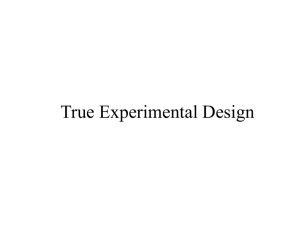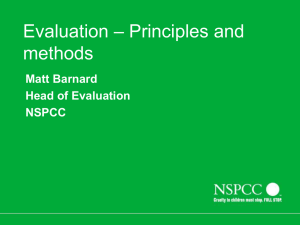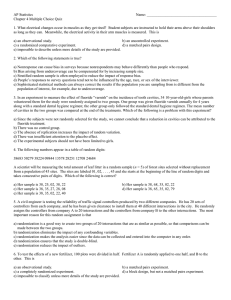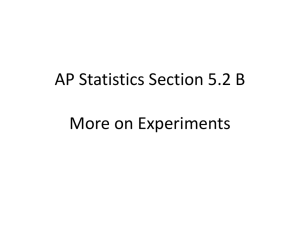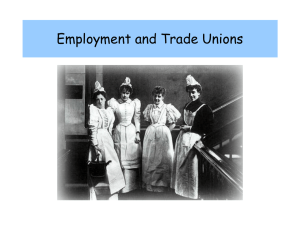Non-theoretical Research (Radical Behaviorism)
advertisement
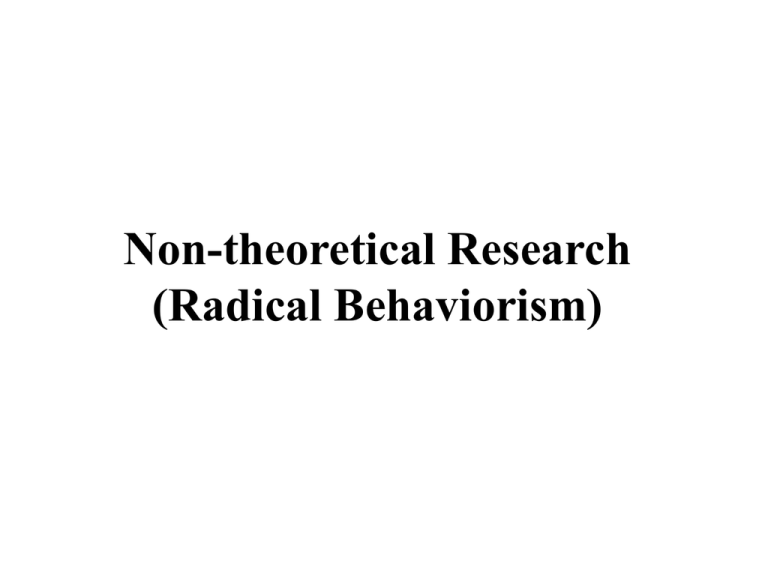
Non-theoretical Research (Radical Behaviorism) Non-theory driven research B.F. Skinner, Radical Behaviorism 1) When you run into something interesting, drop everything and study it. 2) Apparatuses sometimes breakdown A Straight Alley Runway Usually about 6-12 feet long 3) Some ways of doing things are easier than others START RUNWAY GOAL 4) Theories are not necessary and can get in the way of good research. Seek only to describe the functional relationships between/amongst variables. As Fixed Ratio increases, response rate increases Goals of Scientific Research Pages 40-49 1) Description: events and their relationships are defined classified, cataloged. • Examples: DSM-IV TR 2000(diagnostic statistical manual of mental disorders, IV ed. TR 2000) • Pace of Life Study (Levine 1990) Pace of Life (Levine 1990) results 2) Prediction (correlation): occurs when measures vary together (co-vary) in a consistent way. • Examples: GRE scores/undergraduate GPA as predictors of success in a graduate school environment. • Ambady & Rosenthal (1993) 3) Explanation: (causal inference) requires three conditions: • co-variation of events-when one changes, the other changes in a consistent way. • time-order relationship- one event always precedes the other. Antecedent-consequent. • elimination of plausible alternative causes- eliminate all “threats to internal validity” “True Experimental Design” 4) Application: research designed to solve a problem, applied research Quasi-experimental and Applied Behavior Analysis True Experimental Design Variables • In any experiment there are three types of variables: 1) Experimental “Manipulations” a) Independent Variable (IV) b) Individual Differences Variable 2) Dependent Variable (DV) 3) Secondary Variable- a variable that is not a part of the hypothesis under study. Types of Secondary Variables • Confound secondary variable- variable that has unintentionally co-varied along with the IV causing a threat to internal validity. • Extraneous or random secondary variablevariable that is not directly related to the hypothesis and which the E does not attempt to control (allows to vary at random). • Controlled secondary variable- variable not related to the hypothesis but which E does control, either by holding constant, equating across groups or by matching. Independent Groups Designs: Random, Matched, Natural • Independent Groups Designs- the IV is varied (or manipulated) between sets of different subjects, one set for each level of the IV. • Three Types of Independent Group Designs: 1) Random Groups Design 2) Matched Groups Design 3) Natural Groups Design Random Groups Design • The subjects are assigned to the levels of the IV randomly. This is a two step process: 1) draw a pool of subjects from population using some method of randomization. 2) randomly assign subjects to levels of the IV (usually with a constraint of equal n per level) • Must use a formal randomization process, i.e. a random number table (in text), dice, coin toss. • Examples showing why. Examples of way you should us a formal randomization process • Time estimation example Two level IV (with feedback and without) Class of 50 students go to room 666 at 7:00 PM • Arbitrarily (informal randomization) decide: first 25 that arrive placed in “feedback” last 25 that arrive placed in “no feedback” • Results: better time estimation in feedback group Real life (subtle) example: Learning in Rats What does random assignment “buy” you? • Will, on average, in the long run, have an equal representation of all levels of secondary variables in all groups. • The larger the population size and/or the more homogeneous the population, the better randomization will work to provide equal groups. • differences between groups may occur as a result of secondary variables but these differences will occur solely on the basis of chance and we know a lot about “chance” and how it operates (inferential statistics). Random Groups Design Example • Dittmar, Halliwell, & Ive (2006) page 188 of 9th ed. • “Does Barbie make girls want to be thin?” • The effect of exposure to very thin models on young girl’s body image. • Most research on body image done with adolescents and young women. • This research looked at girls age 5.5-6 years • All girls listened to same story, “Mira” shopping for party dress • Looked at picture book while listening to adult read • Some girls saw Barbie doll as “Mira”. Some girls saw Emme doll as “Mira”, some saw a book without any pictures of “Mira”, just scenes and objects. • All girls complete “Child Figure Rating Scale” • IV (s)? • DV (s)? • Secondary variable(s)? • Barbie condition showed the highest body dissatisfaction. • Emmie and no-doll condition showed no body dissatisfaction at all. Matched Groups Design • Different subjects serve at the different levels of the IV however the subjects are matched on the basis of some “important” secondary variable • An attempt to create equivalent groups when you cannot gather a large number of participants and/or your population is very heterogeneous (with respect to your DV). Steps to forming “Matched Groups” 1) Rank-order subjects by performance on the selected “matching task”. Often the task used is the same as your DV but could be some other similar variable relevant to the outcome of the study. 2) Form sets of similar (“matched”) subjects and randomly assign one member from each set to each level of your IV. • Will help to take important secondary variables and form groups that are equivalent with respect to that variable. Example: New drug to control high blood pressure • Measure participants’ blood pressure WITHOUT medication. • Form pairs of people with similar pre-study BP. • Randomly assign one member of each pair to the new medication group and the other to the old medication group. Natural Groups Design • There is no true IV • The variable of interest is an “individual differences” variable • Very common in Psychological Research • Example: Relationship between divorce and subsequent emotional disorders • Even if you find a “statistically significant” result, you cannot claim causality.
